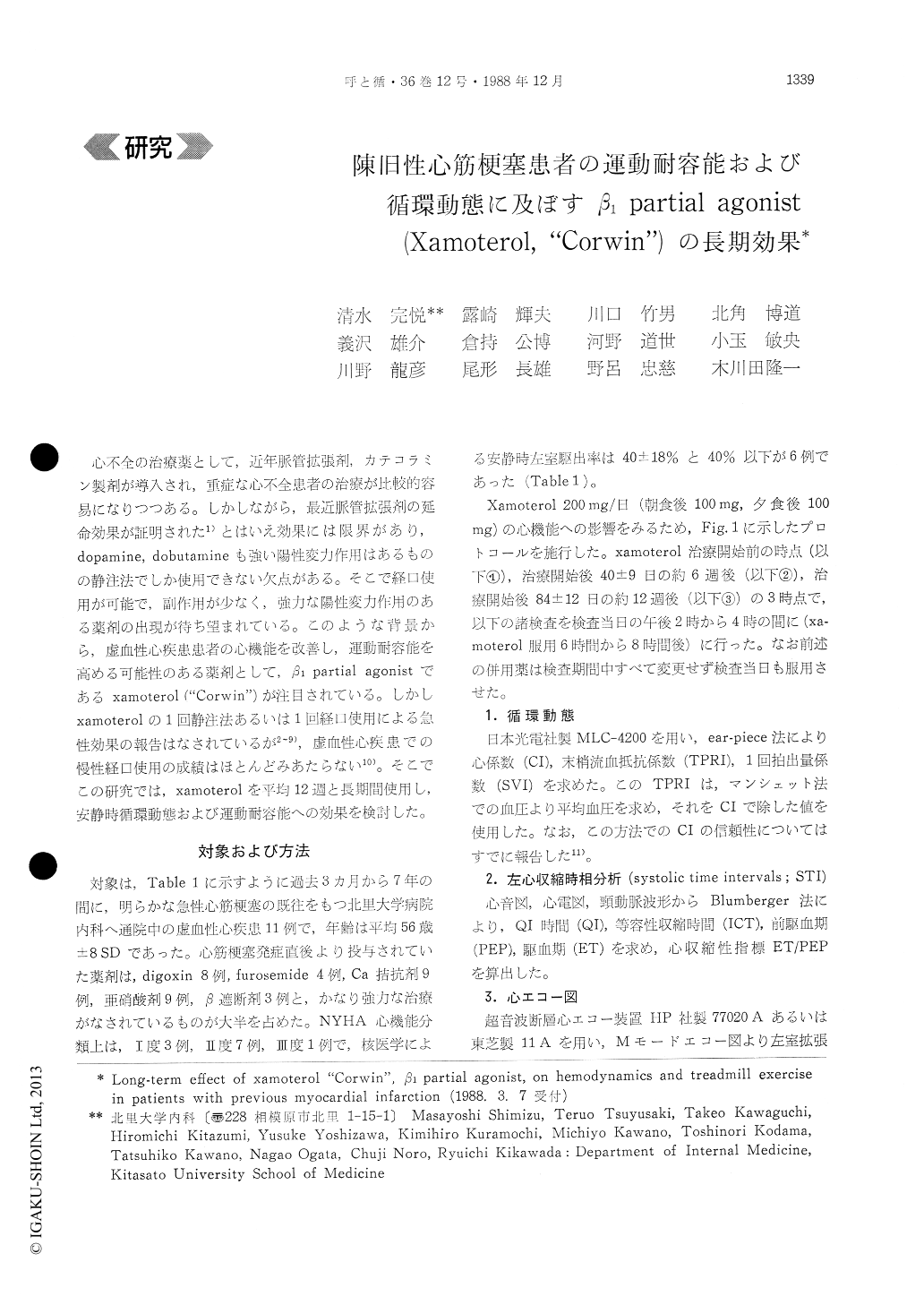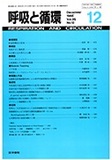Japanese
English
- 有料閲覧
- Abstract 文献概要
- 1ページ目 Look Inside
心不全の治療薬として,近年脈管拡張剤,カテコラミン製剤が導入され,重症な心不全患者の治療が比較的容易になりつつある。しかしながら,最近脈管拡張剤の延命効果が証明された1)とはいえ効果には限界があり,dopamine,dobutamineも強い陽性変力作用はあるものの静注法でしか使用できない欠点がある。そこで経口使用が可能で,副作用が少なく,強力な陽性変力作用のある薬剤の出現が待ち望まれている。どのような背景から,虚血性心疾患患者の心機能を改善し,運動耐容能を高める可能性のある薬剤として,β1partial agonistであるxamoterol("Corwin")が注日されている。しかしxamoterolの1回静注法あるいは1回経口使用による急性効果の報告はなされているが2〜9),虚血性心疾患での慢性経口使用の成績はほとんどみあたらない10)。そこでこの研究では,xamoterolを平均12週と長期間使用し,安静時循環動態および運動耐容能への効果を検討した。
Xamoterol (Corwin), a β1-adrenoceptor partial ago-nist, has been paid attention to for its beneficial effect on cardiac function in patients with ischemic heart disease. However, long-term hemodynamic ef-fect of xamoterol is not well known. Therefore we studied chronic effects of this agent on hemodyna-mica and on exercise tolerance. Eleven patients with an episode of myocardial infarction and with a mild or moderate symptom of heart failure were included. Xamoterol (200 mg/day) was administered orally for 84 days=12 (SD). Hemodynamic examina-tons at rest and treadmill exercise test (using mo-dified Bruce protocol) were performed before and after treatment of xamoterol. At rest : Blood pressu-re or heart rate was not affected by xamoterol. But stroke volume index decreased significantly, while total peripheral resistance index increased. ET/PEP of systolic time intervals, an index of myocardial contractility, also decreased significantly after treat-ment. However, dimensions of left ventricle, left atrium, as well as cardio-thoracic ratio from chest X-ray film didn't change. Treadmill exercise test : Exercise duration time became much longer after treatment (11. 5±- 2.4 min vs 8. 4 ± 3. 9, p < 0. 01). At the endpoint of exercise, blood pressure or heart rate during exercise after treatment was not signific-antly different from that of control. But, increment of heart rate during exercise after treatment was remarkably reduced at the same peak exercise load of control (p<0. 01). Long-term use of xamoterol seems to induce weak negative inotropic action on cardiac function at rest. We should be cautious in the chronic use of this agent in patients with severe heart failure. During exercise, xamoterol showed almost similar effect of β-blockers as far as heart rate was concerned. Since xamoterol was supposed to have ,3-agonistic action even during exercise and exercise tolerance was much improved, this agent appears to be one of promising drugs in the treat-ment of patients with ischemic heart disease.

Copyright © 1988, Igaku-Shoin Ltd. All rights reserved.


